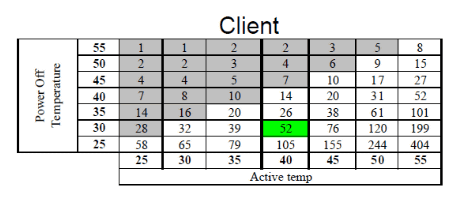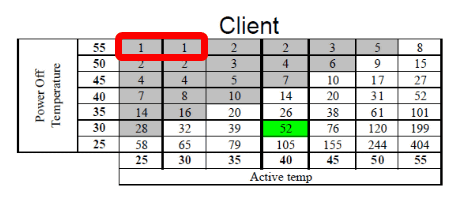Is the disturbance "Is SSD data disappear in high temperature in several days" is correct?

Semiconductor Technology Association (JEDEC)Published by "(PDF file)JEDEC SSD Specifications Explained"There is data that there is a correlation between SSD's data retention ability and temperature in the presentation material on SSD data retention performance, and taking that," If you leave the SSD at high temperature, the data will be in just a few days Many media reported that, "It will disappear," and it made a bit of a fuss. About the truth of these reports that cast doubt on the reliability of SSDAnandTechI am thinking about it.
JEDEC SSD Specifications Explained - Alvin_Cox [Compatibility Mode] _ 0. Pdf
(PDF file)http://www.jedec.org/sites/default/files/Alvin_Cox%20%5BCompatibility%20Mode%5D_0.pdf
The Truth About SSD Data Retention
http://www.anandtech.com/show/9248/the-truth-about-ssd-data-retention
Presentation materials summarized the standard of data retention of SSD. According to this, the SSD for general users is "average temperature for 8 hours a day in an environment with a temperature of 30 degrees, the temperature of the environment where the SSD at that time is 40 degrees" is 1 year It is explained that it is designed to be able to hold without loss. In other words, it is unnecessary to worry about losing data for one year from power off under very common usage conditions.

This conclusion is derived from the data of the accelerated deterioration test which tests the data retention ability published by Intel. The red frame of the image below is a data table for general users.

The data table shows "Temperature in the state of turning off the power supply (that is, temperature)" at the left, "Temperature at power-on (SSD ambient temperature at the time of use)" at the bottom, The data retention period of data is digitized by "Week". For example, if the temperature is 30 degrees and the surrounding temperature of the SSD at the time of use is 40 degrees, it means that it can store data in green "52", ie 52 weeks.

And it is this riot that various media made a fuss about finding the numerical value of "1" in this datasheet and saying "depending on the condition SSD's data retention is only one week."

However, the condition indicating "1" is that "the surrounding temperature of the SSD at the time of use is 25 degrees / 30 degrees" and "the temperature is 55 degrees". It is clear that such a condition is a special environment which is generally impossible such as "to cool in SSD with a water-cooled cooler and leave it in a temperature of 55 degrees environment".
Considering that a general PC adopts the cooling system of the air cooling system, this data table is OK only when you see the part where the ambient temperature of SSD at room temperature is higher than room temperature, that is, the part of white background. Furthermore, it may seem that you can ignore the part above 45 degrees Celsius.

The reason why SSD's data retention tends to weaken as the room temperature is higher is that SSD adoptsNAND flash memoryWrites or escapes electrons in the floating gate to record data, whereas if the temperature is high, electrons tend to escape from the floating gate. On the contrary, the higher the temperature at the time of use, the tendency for the data retention to tend to be higher is that the higher the conductivity of the electrons in the high temperature environment is, the less the stress on the tunnel oxide film which causes degradation can be reduced.
In any case, the SSD, whose unit cost price is overwhelmingly higher than that of HDDs and magnetic tapes, is often used mainly for system storage and should not be used for data storage. For that reason, it is almost unnecessary to put in a "salted" state for a long period of time in data storage applications, so it is said that worrying about the data disappearing when the power is turned off is unnecessary.
·bonus
Fixstars Inc. will release the 6 TB SSD "Fixstars SSD - 6000 M" which will be the world 's largest capacity in 2.5 inch size (9.5 mm thick). Toshiba's 3 TB model of the maximum capacity of 2.5 inch HDDMQ03ABB300Considering that it is already, SSD seems to have overtaken HDD with capacity expansion competition.
Fixstars - News - Fixstars Releases the World's Largest Capacity 6TB SSD "Fixstars SSD-6000M" as a 2.5 in. 9.5 mm Thick SSD
http://www.fixstars.com/ja/news/?p=894

Related Posts:







